The horror genre is often labeled as one that casts the majority of its female characters as victims, and while there’s some truth to it — slashers, typically, but even those usually feature a final girl who eventually triumphs — there are also plenty that see women as the antagonists. Killers, monsters, villains… women can be every bit as vicious, cruel, brutal, and deadly as their male counterparts, and the horror genre is home to some truly memorable examples. To be clear, this isn’t about women seeking legitimate revenge for transgressions committed against them. These aren’t rape/revenge movies or women seeking violent justice for murdered loved ones. We’re talking about women who decide to kill because they’re just a little bit mad, touched by the devil, or simply thirsty for blood.
Keep reading for a look at the 10 most terrifying female villains in horror as voted on by Chris “The Coroner” Coffel, Kieran “Kill ’em All” Fisher, Brad “Guignol” Gullickson, Meg “The Mutilator” Shields, Jacob “Jaws the Revenge is the best Jaws” Trussell, and myself.
![]()
10. Dream Home (2010)

Sympathetic villains aren’t exactly uncommon in the horror genre, but while most fall under the umbrella of revenge-horror the woman at the center of this slice of brutal brilliance from Hong Kong doesn’t quite have that same excuse. Li-sheung (Josie Ho) has been wronged, no doubt, but a greedy landlord upping the price on her dream condo doesn’t justify the bloody madness she unleashes. Her inability to move her hard-working parents into a glorious condo before they grow old and die is heartbreaking, obviously, but it doesn’t legitimize the savage slaughter of her would-be neighbors. She’s a monster, but while we fear her — and fear for those around her — her humanity is undeniable. The film is a gory, bloody, and blackly comic commentary on capitalism’s less attractive aspects, and it builds to one hell of an ending. This is a group list meaning our collective votes landed Dream Home in the top ten at #10, but if it was up to me Li-sheung’s mad redecorating of her dream home with endless splashes of crimson belongs at #1. – Rob Hunter
9. Starry Eyes (2014)
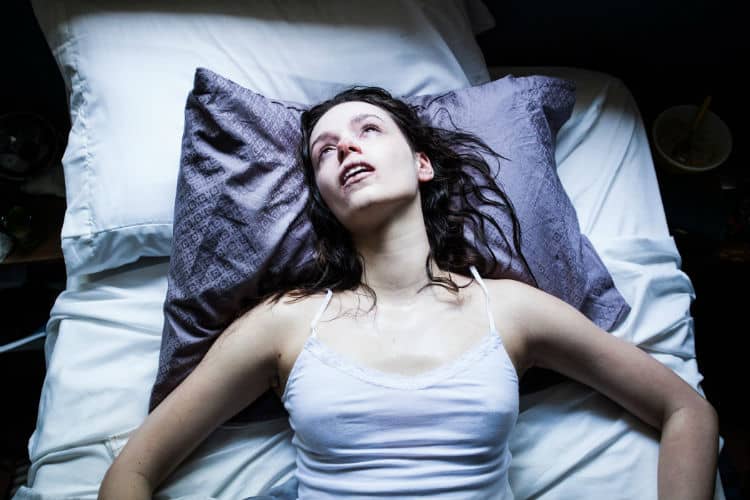
What makes Alexandra Essoe’s Sarah in Starry Eyes a unique villain is hinged on the fact that she is the biggest victim in the film. An actress, looking for her big break, is used and manipulated by a shadowy group of Hollywood elitists that physically transform her into a product, or possibly a deity, onto which they can worship and sell. But this is all at the expense of Sarah herself, as she finds herself literally and metaphorically falling apart in front of our eyes. When Sarah finally snaps, in an explosive display of cornered rage, you feel a resigned pity. While ritualistic Satanism is a parable for the lengths that studios and executives impose on actors trying to make a living, its mythic root is still firmly planted in reality. Actors can be made to do anything on the slight chance that their dreams will come true. And if anything, that’s where the true evil of the film lies. – Jacob Trussell
8. Let the Right One In (2008)
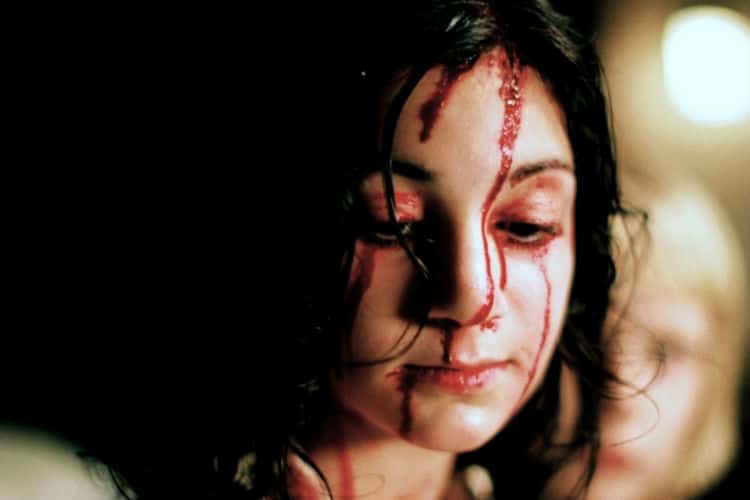
When the discussion turns to vampires many are quick to jump to Dracula, Bram Stoker and Bela Lugosi, and with good reason. In vampire lore those are all iconic names. However, if the conversation begins to trend towards the most frightening of vampires it must take you to a vampire that takes on the appearance of a 12-year-old girl and goes by the Eli (Lina Leandersson). Of course, I’m referring to the menacing creature at the center of Let the Right One In. It’s odd to view a little girl as terrifying, but that’s partly what makes Eli so effective. They have a sweet and innocent presence that comes naturally to them. In Eli’s case she is able to use that to her advantage to manipulate Oskar, the poor bullied boy that lives next door. In the eyes of Oskar, Eli is a beacon of light, helping to set him free from his troubles. In reality, Eli is a bloodthirsty creature of the night looking for a new human slave to bring her victims. She’s neither kind nor gentle and uses Oskar’s vulnerability to get what she wants. She is terrifying. – Chris Coffel
7. Deep Red (1975)

You’d forgive the victims and law officials of Deep Red for assuming the gloved killer is male. Giallo, more than most genres, tends to abide by narrative landmarks, one of which being that dudes do the killing (especially if they’re a priest). But like a good joke, Deep Red takes just as much pleasure in subverting our expectations as it does meeting them. The killer here is not only a woman, but middle aged: Marta (Clara Calamai), the scatterbrained ex-actress mother of our protagonist’s best friend. Until the rug pull reveal, Marta has seemed nothing other than a friendly, if devastatingly lonely housewife; a source of comedy and a feather in the cap of our protagonist’s contention that women are simple-minded, subservient, and incapable. In horror, when we’re presented with a violent point of view, we automatically assume that it is a male one. This is particularly true of gialli, where the camera’s gaze towards female victims is typically infused with a fixed, sexually-tinged hatred. Though, perhaps, in a film populated by sensitive male artists, queer folks, and career women, we should have been more suspicious of our gendered assumptions of what makes a killer. – Meg Shields
6. All the Boys Love Mandy Lane (2006)
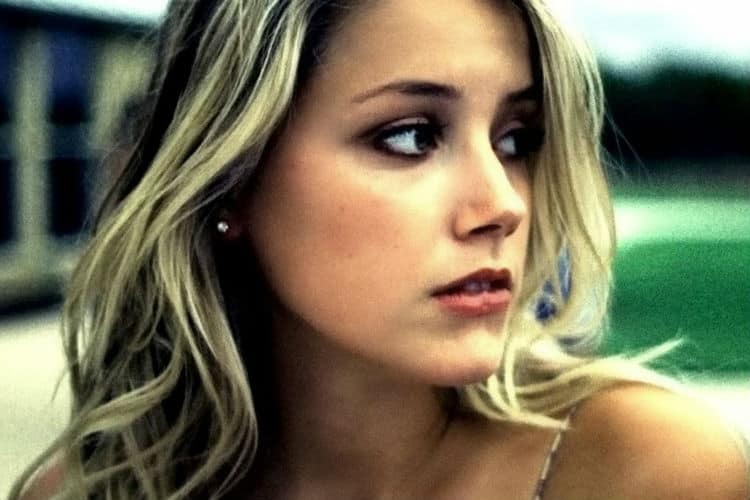
While the movie itself is a mixed bag, it scores points for a memorable villain in the form of a young Amber Heard as the eponymous character. Mandy Lane may seem like just another attractive good girl that all the boys want to get with, but she has a sinister side underneath her sweet exterior. And that’s what makes her such an awesome villain: nobody guesses that she has a homicidal streak until her truth is revealed catching both characters and viewers alike off-guard. As far as evil goes, it doesn’t come more unexpected and calculated than this angel. – Kieran Fisher
5. Audition (1999)
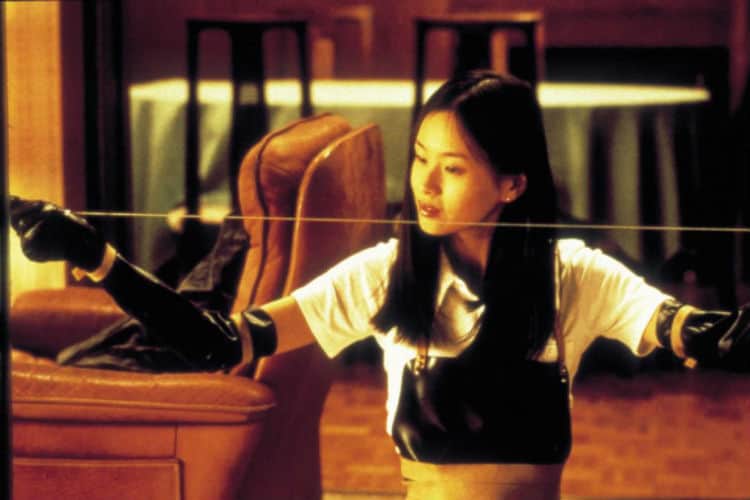
Takashi Miike’s filmography is filled with ammo for those wanting to accuse him of rampant misogyny, but anyone with eyes can see that his movies mistreat both sexes with an equal zeal for pain, abuse, and violent debauchery. Evidence exhibit B, though, is the existence of Audition. Asami (Eihi Shiina) is the one taking lives and body parts, but the men in the film are its true villains, and while they may not fully deserve what she’s dishing out it’s their systematic dismissal and manipulation of Asami’s (and other women’s) emotions that lands them in trouble. Not only is she ruthlessly efficient in her payback, but she also cuts a traditionally diametric figure as her demure beauty is balanced by vicious glee. The film is a masterclass in tone, tension, and whatthefuckery, and the onscreen key to it all is Asami. She’s calm and loving until she’s ruthless and determined, and you can’t help but fall a little bit in love with her. (But you really, really shouldn’t.) – Rob Hunter
4. Misery (1990)

Stephen King has an undeniable talent for illuminating the horror of the everyday. And that is precisely what makes Annie Wilkes (Kathy Bates) so scary. She fits a certain expectation we have about harmless women: she’s unassuming and demure, a kindly neighbor, a passive spinster. It is then, through contrast, that her sweetness sours into something terrifying. Once the stakes of her outrage have been revealed, Annie’s gentleness feels less like innocence than a veiled threat. A socially acceptable guise for her bubbling obsession and boundless fury. In a lesser actress’ hands, Annie’s polarity could have easily been overacted into the land of ham. But Kathy Bates’ hair trigger oscillations are the stuff of nightmares: she has the deceiving meekness of Ed Gein, the deceptive charm of Dahmer and Bundy. Speaking of his substance abuse at the time he wrote “Misery,” King told Rolling Stone: “Annie Wilkes is cocaine. She was my number-one fan.” Wow, Annie somehow got more terrifying! Thanks Stephen! – Meg Shields
3. Inside (2007)

No word describes Inside better than unrelenting. But what’s frightening about Béatrice Dalle in this premiere French extremism film isn’t any of the grotesque acts on display, but rather the motivations behind them. The unnamed woman is showing unparalleled, redemptive rage that is very rarely ever seen on film. And it’s terrifying, ultimately, because of how relatable it feels. The depths of the brutality in the film are excessive, and nary a frame is free of oozing red blood but the violence doesn’t feel as salacious as the urban legend-esque premise would lead you to believe. Instead, we can put ourselves in the shoes of our nameless antagonist, leaving the audience afraid to ever find out the answer to the question, “What would you do if your child was ripped away from you?” – Jacob Trussell
![]()
2. Hellraiser (1987)
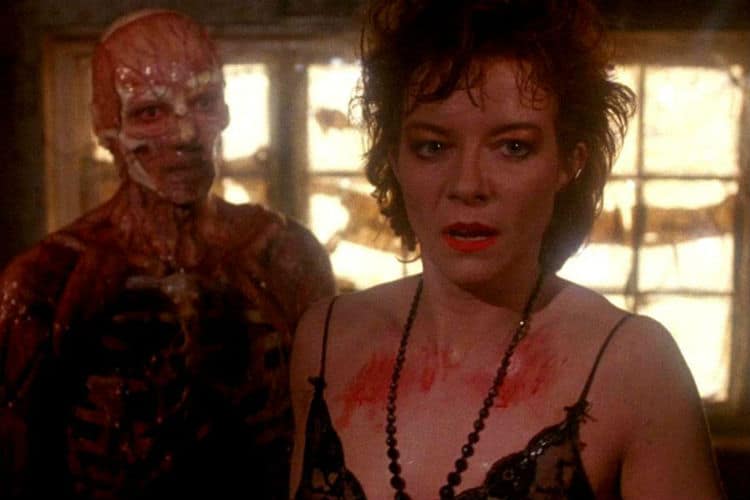
To escape a sour marriage, an exit strategy must be carefully constructed. For Julia (Clare Higgins), a gateway to oblivion is better than a lifetime trapped in bed next to Larry, the human snore. While her dull husband strains to mend fences between them, Julia begins to strategize with the lump of meat in the attic. Frank, her brother-in-law and one-time lover, is trapped between realms. He demands blood to speed his resurrection on Earth, and Julia complies by hunting and draining random barflies that fall into her web. Julia finds a new purpose in the slaughter. She’s good at it, and the satisfaction earned from the slaying of dimwits is intoxicating. Julia is a machine when it comes to death and she earns her place next to the Cenobites. She may not have the swanky S&M leather, but she proves herself to be the greatest threat in Hellraiser. – Brad Gullickson
1. The Loved Ones (2009)

As someone who spent his entire high school tenure unable to get dates, I can sympathize with Lola, a heartbroken psychopath who just wants to go to prom with the boy of her dreams. Of course, she takes things a little too far when her and her father — who may love his daughter just a little too much, if you catch my drift — kidnap the dream hunk for a prom night he’ll never forget. Lola is a spoiled daddy’s girl and an unrelenting sadist, and Robin McLeavy’s performance is so terrifying and full of manic energy that you can’t help but admire her. For me, Lola is one of the best horror villains of any gender or species. – Kieran Fisher
![]()
The post 10 Most Terrifying Female Horror Villains appeared first on Film School Rejects.

0 comments:
Post a Comment